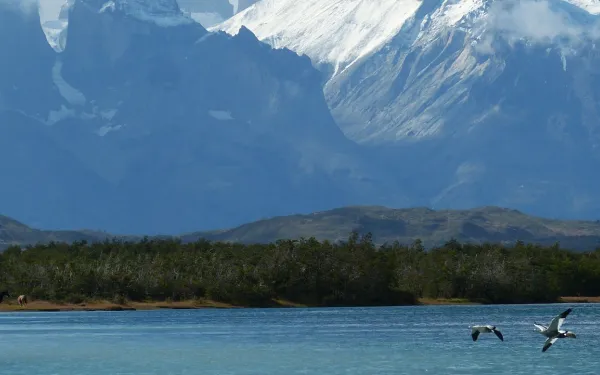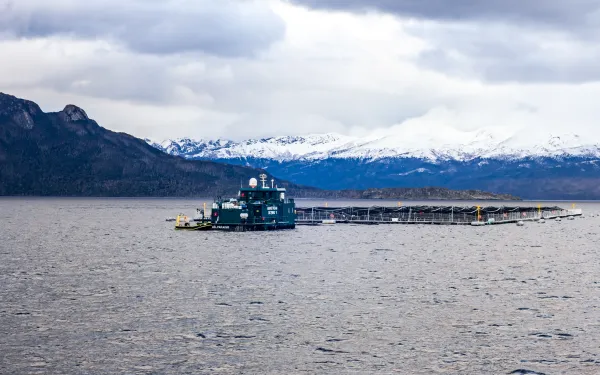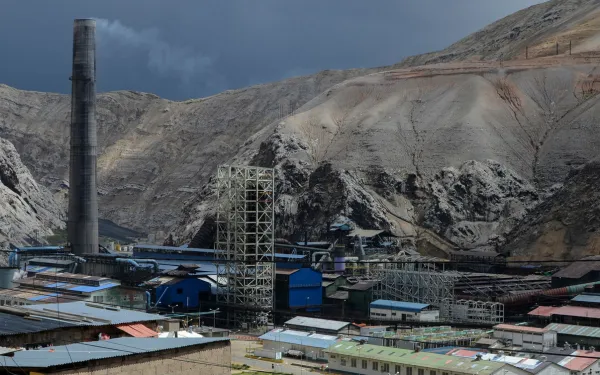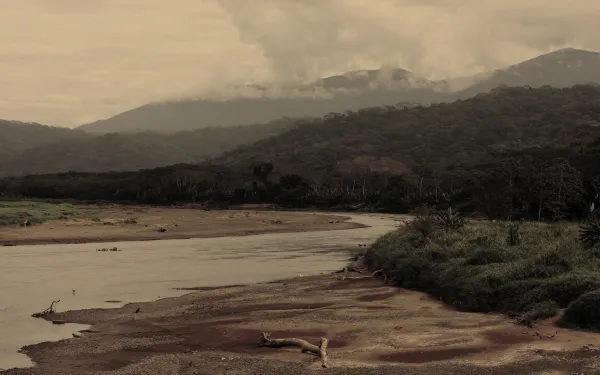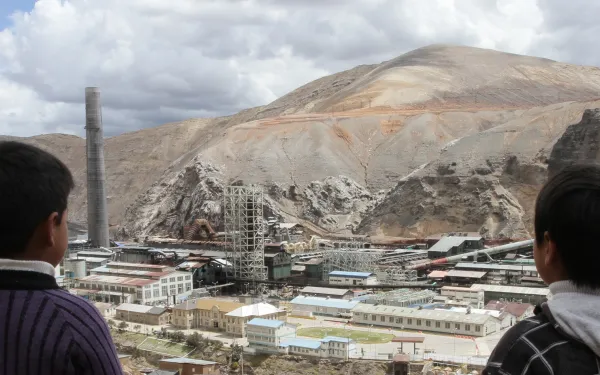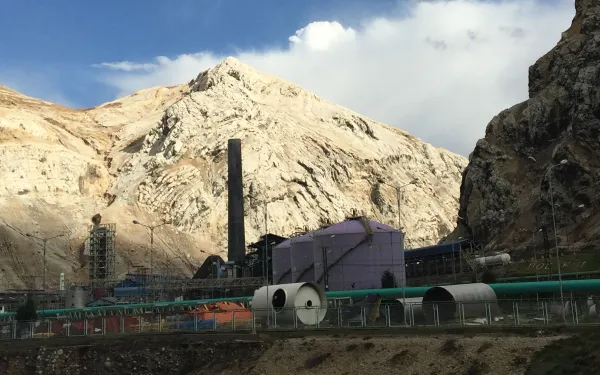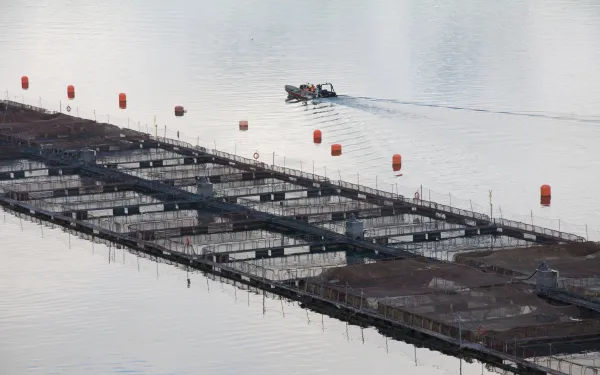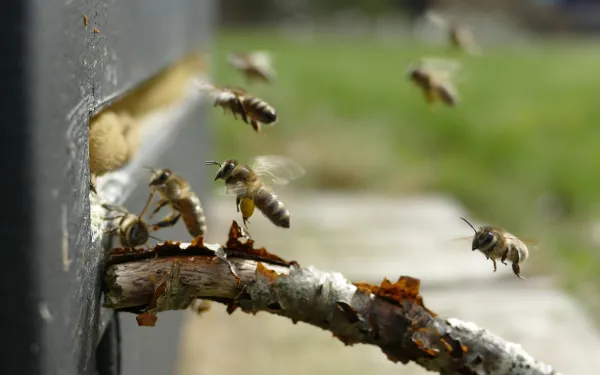
Chilean chum: How eating salmon in the US hurts Patagonia’s coastal wildlife
After two years of vegetarianism, the Texan in me decided that an entirely plant-based diet was not going to work. The experience, however, taught me to consume meat ethically. Wherever possible, I now choose organic and sustainable “farm to table” meat and poultry. But when it comes to my favorite seafood—salmon— “farm to table” can take on a whole new meaning. Salmon is one of the most popular seafoods in the United States, and over a third of all salmon in the U.S. comes from Chilean salmon farms, which raise the carnivorous fish in off-shore enclosures along the Patagonian coast. Although salmon is healthy—it’s loaded with omega-3 fatty acids and B-vitamins—increased U.S. demand for salmon is having an unhealthy impact on Chile’s environment. These farms endanger delicate coastal ecosystems, contribute to oceanic pollution, and threaten marine life along the pristine Magallanes shoreline. Chile is the second largest global exporter of the fish, and salmon farming is one of the country’s largest industries. Today, that industry is growing. There are already over 100 salmon farms operating in the Magallanes and, as of March 2017, plans for 342 more were in the works. Driving this expansion is a booming worldwide salmon market. But even though the U.S. boasts a salmon industry of its own and wild-caught Alaskan salmon is considered some of the best in the world, U.S. consumers ate over 144,000 tons of farmed Chilean salmon in 2016, according to the National Oceanic and Atmospheric Administration. A fishy situation While fish farms are one solution to the many problems associated with overfishing, Chile’s unregulated salmon industry has serious environmental side-effects. These salmon farms disrupt their environments because overpopulated waterways create anaerobic conditions that deprive the local wildlife of oxygen. Often treated with excessive amounts antibiotics and pesticides, uneaten salmon feed and salmon feces also pollute coastal seafloors and introduce chemicals into the environment. Because they are not native to the southern hemisphere, salmon that escape their pens can disrupt local food chains. Salmon also frequently die in their enclosures, and the decomposing fish raise levels of ammonia in the water. Although research is still underway, scientists speculate that higher concentrations of ammonia, along with El Niño weather patterns and warming oceans caused by climate change, may be responsible for Chile’s recent “red tides.” These toxic red algae blooms kill coastal wildlife by the millions, inundating Chilean shores with dead fish (including salmon), birds, and whales. To fight back against this destructive industry and the harmful impacts of globalized seafood trade, AIDA filed a claim with the Chilean government expressing concern that salmon farms are harming local ecosystems. “We want to improve the way things are being done by aiming for sustainable development that will not ruin the fragile ecological balance of the Patagonian seas,” AIDA attorney Florencia Ortúzar said. AIDA also recently began a petition asking that Chile investigate the damage caused by salmon farming in the Magallanes and sanction those responsible. You can sign the petition here. New migration routes Today, the U.S. salmon industry practices catch and release: it is known for producing high quality fish, yet 80 percent of Alaskan wild salmon is traded away. So why does the U.S. produce some of the world’s best salmon, but consume some of the world’s most environmentally harmful fish? The answer, in short, is globalization. Filleting and de-boning salmon is a process too delicate to mechanize as in other meat industries. Because labor is cheaper in Asia, U.S. salmon is shipped to processing plants in China, which then re-distribute the processed fish across the region. While some of that salmon makes it back across the Pacific, the U.S. market is flooded with cheaper farmed salmon from around the world. Now, Chile’s industry “is facing competition from Canada and Norway,” according to trade analysis group Datamyne. After expressing concerns over high levels of antibiotics in Chilean fish, U.S. retail giant Costco decided in 2015 to stock Norwegian salmon instead, further muddying the waters in the U.S. salmon trade. To make matters worse, a study by conservation nonprofit Oceana concluded that nearly 43% of “wild” salmon sold in the United States was misidentified. While it is difficult to tell whether farmed salmon is mislabeled as “wild” during trade or once it shows up on the menu, lax labeling laws in the U.S. make it difficult to tell exactly where that salmon steak came from. So for seafood lovers like me, there may be few good options for eating salmon sustainably, besides taking up fly fishing. But for the sake of protecting Chile’s coastal wildlife, maybe it’s time U.S. consumers make their voice heard. If we’re going to import salmon from Chile, we should at least demand the country regulate its farms to be more environmentally friendly. Maybe it’s also time the U.S. salmon industry started keeping its catch in its own boat. Sign the petition to protect Patagonia’s Magallanes coastline here.
Read more
